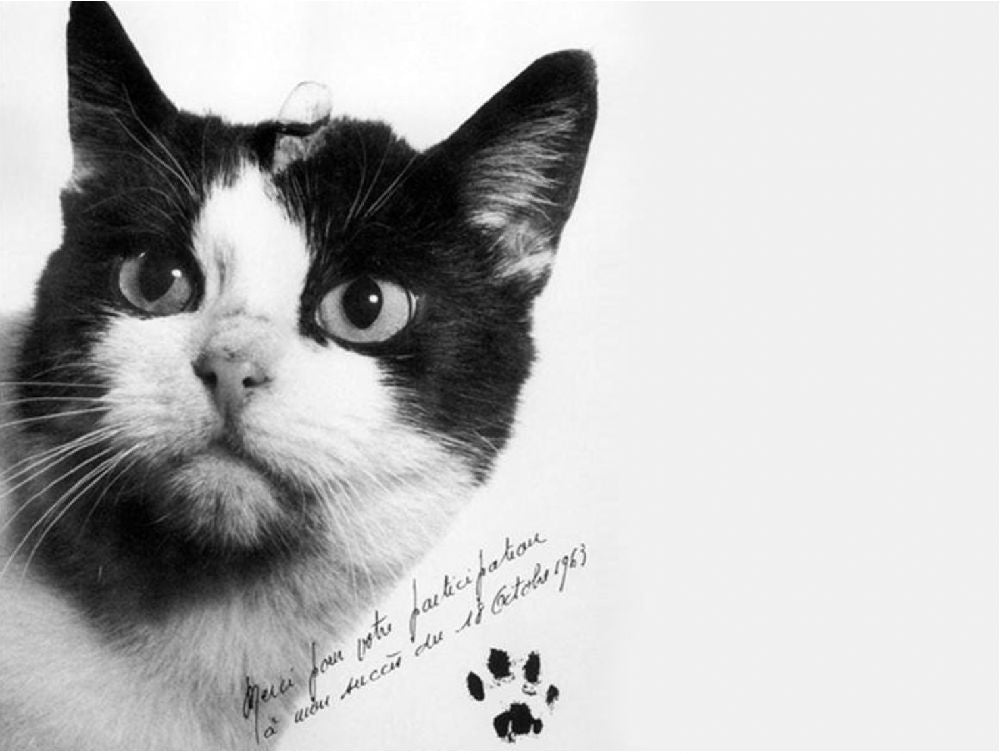Félicette, the First (and only) "Catstronaut" in Space
Rebecca West
Early space exploration wasn't initially manned by humans. We often hear about the chimps and even the little dog from Russia, Laika, who became one of the first animals to go into orbit. But we seldom hear about the first cat in space, a stray Parisian kitty with black and white fur. So what's her story? It's actually kind of sad, so grab your Kleenex box and get ready to dab your eyes, because it's going to be a bumpy flight.
First Cat in Space
Little Félicette, as her autographs would be signed, was launched on October 18, 1963, from the Sahara Desert's Interarmy Special Vehicles Test Centre in Algeria as part of the French space program. Her story actually begins in 1961, though, when France got the idea to stage a series of missions of its own. Rather than using dogs or monkeys, like Russia and the U.S., they decided to use cats to collect the necessary data for future manned missions. So, 14 felines were acquired by French CERMA space scientists for their trials. All 14 of them were females, and they were given numbers, rather than names, so the scientists wouldn't get too attached to them. This is common in scientific trials and even on farms where animals are raised as stock rather than pets.
Becoming an Astronaut
Here's where it starts to get bumpy. They were fitted with electrodes to record their brain activity throughout the flight, and the cats had to undergo astronaut training. That included being confined in small containers for long periods to test their reactions to cramped quarters. After her launch in a Veronique rocket, which occurred at just after 8 a.m. local time, the capsule was recovered 13 minutes later with Félicette miraculously surviving the flight. It's said that most of the data collected from the brief trip were usable and of good quality, making the mission a success.
Felix the Cat
In the meantime, the press — who were given the flight's biological data — named C 341 (her clinical number) "Félix" after the popular cartoon series Felix the Cat. CERMA soon officially changed Félix to the feminine Félicette. Sadly, however, the Parisian kitty was euthanized a few months later to examine her brain in conjunction with the effects of spaceflight. No other felines were ever to become "catstronauts" again, and ironically the French would not go on to launch their own astronauts.
Memorial Fit for a Feline Hero
While she was technically only "in space" for approximately five minutes, her fame would last many years before fading into history. More recently, a sweet statue depicting Félicette in bronze was unveiled by three European Space Agency astronauts in December 2019 at the International Space University Campus in Strasbourg, France. She sits perched upon the planet Earth while peering toward the heavens atop a tall pedestal. The statue was designed by sculptor Gill Parker and forged by Sculpture Castings in Basingstoke, U.K. If you're ever in Strasbourg, look her up.


 Photo:
Photo: 
